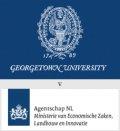A patent which protects several different products can obtain several SPC’s
12-02-2014 Print this page
A patent which protects several different products can obtain several SPC’s.
"30. In that regard, it is possible, in principle, on the basis of a patent which protects several different ‘products’, to obtain several SPCs in relation to each of those different products, provided, inter alia, that each of those products is ‘protected’ as such by that ‘basic patent’ within the meaning of Article 3(a) of Regulation No 469/2009, in conjunction with Article 1(b) and (c) of that regulation (Case C‑443/12 Actavis Group PTC and Actavis UK [2013] ECR I-0000, paragraph 29), and is contained in a medicinal product with an MA.
31. Indeed, the wording of Article 1(b) and Article 3(c) of Regulation No 469/2009 does not preclude such an interpretation. That interpretation is also borne out by the objective pursued by that regulation, which, as is apparent from paragraph 11 of the Explanatory Memorandum to the Proposal for a Council Regulation (EEC) of 11 April 1990 concerning the creation of a supplementary protection certificate for medicinal products (COM(90) 101 final), is to encourage research in the pharmaceutical sector by granting one SPC per product, a product being understood to mean an active substance in the strict sense. Any other interpretation might, moreover, give rise to circumvention tactics, entailing additional costs which may discourage innovation, in the sense that those concerned would be minded to apply for a separate basic patent for each of their ‘products’.
35. In the main proceedings, in the light of paragraph 30 above, the combination of the four active ingredients in question (which includes HPV-16) as well as HPV‑16 as an active ingredient individually, are protected by Georgetown University’s basic patent within the meaning of Article 3(a) of Regulation No 469/2009. Therefore, Article 3(c) of that regulation does not, in principle, preclude Georgetown University being granted, on the basis of that patent and the same MA, namely the marketing authorisation for Gardasil, an SPC both for the combination of active ingredients (HPV-6, HPV-11, HPV-16 and HPV-18) and for the active ingredient HPV-16 individually. Even if the protection conferred by two such SPCs were to overlap, they would, in principle, expire on the same date.
41. In the light of the foregoing considerations, the answer to Question 1 is that, in circumstances such as those in the main proceedings, where, on the basis of a basic patent and an MA for a medicinal product consisting of a combination of several active ingredients, the patent holder has already obtained an SPC for that combination of active ingredients, protected by that patent within the meaning of Article 3(a) of Regulation No 469/2009, Article 3(c) of that regulation must be interpreted as not precluding the proprietor from also obtaining an SPC for one of those active ingredients which, individually, is also protected as such by that patent."
IPPT20131212, CJEU, Georgetown University v NL Octrooicentrum
C‑484/12 - ECLI:EU:C:2013:828

















